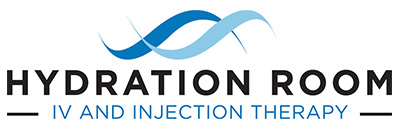IV Treatment for Migraines
IV Treatment for Migraines
By The Hydration RoomMarch 10, 2022

If you’ve ever experienced a headache, then you know how unpleasant it is. Your head pounds and throbs while you do your best to go about your day and hope for the best. In extreme cases, you might experience symptoms of nausea, light sensitivity, and even impaired vision. When headache symptoms become this extreme, they become classified as a migraine.
What Causes Migraines?
There are many factors that can cause a migraine in an individual. Some of the most common causes are:
Dehydration
The human brain is mostly composed of water, so when we get dehydrated, our brain contracts. This can cause symptoms like loss of focus, memory issues, and even headaches and migraines. Rehydrating can help lessen symptoms and get you back on your feet sooner.
Stress
Long-term stress can have negative effects on the body. Whether that stress is physical or emotional, our body internalizes the stimulus resulting in symptoms like increased blood pressure, anxiety, and migraines. If you frequently suffer from stress headaches, try to find ways to reduce your exposure to stress or healthy coping mechanisms that allow you to manage your stress.
Light
Light exposure is another common migraine trigger. In particular, prolonged exposure to blue light like we experience from electric screens can strain our eyes and brain, resulting in a migraine. Even if light didn’t cause the migraine, many individuals report that light exposure made their migraines worse. Finding ways to limit or moderate your light exposure may be a helpful way to prevent future migraines.
Insomnia
Americans across the country suffer from insomnia. Along with exhaustion and brain fog, prolonged sleep deprivation can also result in migraines. Try to nap or rest next time you have a migraine and see if that helps lessen the pain. Long-term individuals with insomnia should consult with a doctor for a personal solution to their sleep issues.
Overstimulation
Have you ever gotten a migraine after going to a concert or convention venue? Your migraine may have been caused by overstimulation. While we normally handle external stimuli without problem, locations with heightened external stimuli such as loud music, bright lights, and lots of other people can cause us to become overstimulated and overwhelmed. In this situation, a migraine is our body’s way of saying, “I need a break!”
Genetic Predisposition
Unfortunately, some people are predisposed to migraines. Whether they’re simply more sensitive to any of the above factors or another genetic reason, certain individuals will have migraines throughout their lifetime. In these cases migraine management becomes a key factor in improving quality of life. One way to manage recurring migraine is to use IV treatment.
IV Treatment for Migraines
IV treatment is one of the most effective methods of treating migraines because it addresses three key points:
Rehydration
While dehydration isn’t always the cause of migraines, rehydrating is one of the best ways to treat a migraine. Because hydration is so important for brain health and function, hydration should always be one of your first steps when attempting to treat a migraine. IV treatment for migraines rehydrates you intravenously which cuts out the absorption time you normally need while drinking. Likewise, IV treatment for migraines is able to provide hydration in larger doses than simply drinking water.
Vitamins, Minerals, and Antioxidants
In today’s fast-paced world we sometimes trade health for convenience. We all try to get in our recommended daily dose of vitamins and minerals (with some antioxidants thrown in for good measure), but it can be easy to lose track of where we’re deficient. IV treatment for migraines includes ingredients like vitamin B12, magnesium, and glutathione to help treat pain and reduce the migraine’s longevity.
Pain Relief
The Hydration Room’s IV treatment for migraines utilizes a pain reliever in its formula to reduce symptoms while your body is being treated. Nausea is a very common migraine symptom which can make it difficult to take oral pain killers without causing an upset stomach. Because the pain reliever is administered intravenously, you can avoid the risk of upsetting your stomach while still getting relief.
By combining these three elements, our IV treatment for migraines is able to work quickly and efficiently, so you feel better faster.
For Migraine Relief Try the Hydration Room
Whether you suffer from chronic migraines or are looking for one-time relief, the Hydration Room is ready to provide you with IV treatment for migraines. Schedule an appointment today at your local Hydration Room.

 Anti-Aging and NAD+ Therapy
Anti-Aging and NAD+ Therapy The Skinny on Skinny Shots
The Skinny on Skinny Shots Celebrate the New Year with Hangover IV Therapy
Celebrate the New Year with Hangover IV Therapy